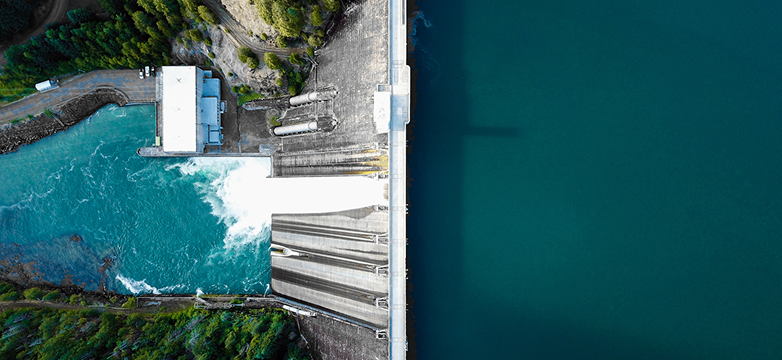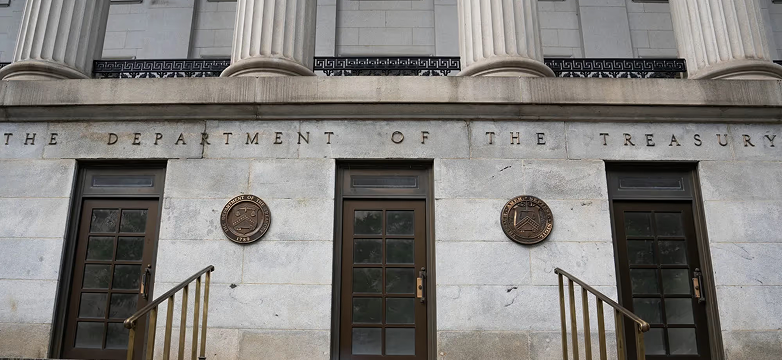Section 48 C&I solar tax credits: a beginner's guide

What is a C&I solar project?
Solar power developments come in all sizes: from large, utility scale installations that can generate hundreds of megawatts to small rooftop residential projects designed to meet the demand of an individual household. In between, commercial and industrial (C&I) solar installations typically range from several hundred kilowatts to as much as 10 megawatts and are designed to serve the load of a dedicated commercial or industrial customer.
C&I systems are commonly installed on either a rooftop (for a warehouse or large enclosed building) or other land owned by the customer (for instance, a landfill). Co-location with a customer’s existing operations shortens the time period required to develop a project, when compared to a larger solar installation for which land acquisition and permitting can be time-consuming. Projects are also typically considered “behind the meter,” meaning that the process for interconnecting a new facility proceeds according to a timeline set by the local utility, rather than by regional or federal regulators (as is the case with wholesale energy projects).
How does C&I differ from other solar tax credits?
The process for generating tax credits from a C&I solar project is similar to that of a utility-scale solar project. Both are eligible to generate either investment tax credits (ITCs) or production tax credits (PTCs), though C&I solar projects will almost always elect to generate ITCs due to their relatively higher capital costs, which boosts the value of the ITC relative to the PTC.
C&I solar projects can list tax credits for sale for individual projects, or developers may bundle a number of projects into a larger portfolio of tax credits. In the latter case, the face value of the credit portfolio may be comparable to a utility-scale project, totaling tens to hundreds of millions of dollars worth of tax credits. For an individual project, the face value of the credit package may be smaller — several hundred thousand dollars to a few million dollars.
Smaller projects and portfolios (under $10 million worth of credits for sale) typically price at a discount to larger portfolios. A variety of factors can influence the fair market value of a tax credit portfolio. Based upon 2023 Crux platform data, we estimate that C&I solar project credit pricing can range from the mid 80s for a smaller deal to the mid 90s for large portfolios (over $50 million). An approximate credit pricing curve is depicted in the figure below. On average, in 2023, solar ITC deals totaled $20 million in face value and sold for 92 cents per dollar of tax credit.
Market pricing curve for Section 48 solar ITC deals, 2023

Source: Crux 2023 market intelligence report
What are the benefits of purchasing C&I credits?
C&I solar projects have several important differentiating features when compared to other solar tax credits.
Efficient land use and low environmental impact
First, these projects make efficient use of land. They’re typically installed on rooftops of commercial or industrial operations, over shaded car parks, or on owned land that is already employed for industrial purposes. As a result, projects have a minimal environmental footprint. Large utility-scale solar installations are an important part of reducing emissions from the power sector at scale, but these facilities often require converting farmland or developing new land areas due to their significant size. C&I projects also typically require less investment to upgrade grid infrastructure, lowering the environmental impact. Efficient and environmentally friendly C&I solar projects have an important role to play in meeting demand from commercial and industrial users.
A minimal environmental footprint, coupled with the emission-free electricity generated by a solar project, makes C&I solar projects especially environmentally conscious. For corporate taxpayers interested in supporting their own sustainability objectives (especially those with biodiversity and/or responsible land use considerations), C&I solar is a valuable project category to consider when exploring opportunities to purchase clean energy tax credits.
Geographic diversification
Corporate tax credit buyers have a variety of considerations when it comes to evaluating tax credits to purchase. Some have expressed particular interest in purchasing tax credits from projects in their geographic region — whether as a way to develop relationships with a project developer in order to supply tax credits for future tax years, to illustrate their commitment to their local economy, or to have a tangible connection to the project(s) they’re supporting.
As of February 2024, Crux has over 200 MW of C&I solar projects listed on the platform, with nearly $250 million worth of credits for sale across 17 states. New projects are added weekly. The greatest proportion of these projects are in the PJM Interconnection, which stretches from Washington, DC and New Jersey to Chicago. Utah, California. Illinois, Utah, and California also have a number of projects with credits for sale.
Distribution of solar C&I projects listed on Crux by state and power market region

Source: Crux platform data
Supporting equitable energy development
A relatively large share of C&I projects on the Crux platform indicate that they qualify for additional tax credit bonus adders — whether for locating in an energy community, a low-income, or tribal community, or for utilizing a high level of domestic content. The Inflation Reduction Act awards these projects additional incentives because the law is designed to promote equitable energy development — boosting domestic jobs, especially in lower-income areas and in historic energy communities.
These incentives are working. According to an analysis in November, investments in underprivileged communities is on the rise following the passage of the IRA. The analysis by the Treasury showed that “investments in the clean energy economy are disproportionately benefiting economically disadvantaged communities,” with the share of new investment in low-income communities rising to 78% from 68% after passage of the IRA. The Treasury found that bonus eligible investment in energy communities rose to $5 billion per month from $2 billion per month after the IRA was passed.
C&I solar projects represent an important driver of this surge of new investment in the communities most in need of it. 40% of the C&I solar projects on the Crux platform indicated that they are eligible for the energy communities bonus, low-income communities bonus, or domestic content bonus (or a combination of these bonuses). For tax credit buyers, these characteristics serve as an illustration of the positive impact that projects can have on communities.
Crux has hundreds of millions of dollars of high-quality C&I projects and portfolios of all sizes listed for sale on our platform. Get in touch with us today to understand the unique benefits of these projects.
C&I solar developers’ frequently asked questions:
How does my C&I solar project access tax credits?
Like large utility-scale projects, C&I solar projects are entitled to receive tax credits proportional to their investment in eligible project costs. Like with other types of solar installations, ITC values are often calculated through a third party evaluation of eligible costs (a cost segregation report). All projects are entitled to a base ITC rate of 6% of their project costs, which rises to 30% for projects which meet prevailing wage and apprenticeship (PWA) requirements, laid out by the US Treasury Department and the US Department of Labor.
Projects are entitled to claim additional bonuses if they satisfy several other criteria, including:
- A 10% bonus to the ITC rate for meeting domestic content requirements
- A 10% bonus to the ITC rate for projects located in energy communities
- Between 10% and 20% bonus for projects (up to 5 MWac) located in a low-income community, on Indian land, or part of a low-income residential or economic benefit project.
At the most, a C&I solar project that meets all bonus criteria could boost their eligible ITC rate as high as 70% of project costs (though, in our experience, this is not common).
Finally, once a C&I solar project has been placed-in-service and the owner has elected to sell the tax credits the project has generated, the project owner may register the project with the IRS and obtain a pre-registration number from the agency.
How do I list my C&I solar projects on Crux?
Developers can list their projects on the Crux platform in less than 10 minutes with no fees and no exclusivity commitment required. Our software is designed to maintain confidentiality, and sellers need not have every detail hammered out before taking stock of the market. Developers are able to list their projects for sale individually and/or as part of a portfolio of projects and can set minimum pricing and deal expectations.
Finally, our transparent platform allows project developers to solicit non-binding indications of interest from prospective credit buyers across the widest cross-section of the market on Crux. Our experience reflects that competition and transparency can be particularly beneficial for sellers of credits. In 2023, we found that 37% of projects that received at least one non-binding bid also received multiple bids, and these projects typically saw appreciation in the value of their credits by 3-6%.
Once a bid has been received and accepted and a developer has executed a term sheet with the prospective buyer, Crux helps sellers manage the due diligence process with an organized data room. Due diligence is an important part of obtaining insurance coverage, which is required in most ITC deals, and allowing buyers to obtain confidence in the credits they seek to purchase.
For C&I solar developers interested in exploring Crux, get in touch with us today.
Additional insights & news

March 27, 2025
Crux’s data suggests that transferable tax credit buyers who transact earlier in the year can take advantage of wider tax credit credit availability as well as more potential for pricing discounts.
Read More.jpg)
March 13, 2025
Transferability has created new and more accessible ways for more developers and manufacturers to monetize tax credits. With the emergence of transferability and the growth of this liquid and transparent transferable tax credit market, new financing structures have emerged.
Read More
March 7, 2025
As tax credit buyers begin to plan their 2025 strategies, one question keeps coming up: how will policy changes affect the transferable tax credit market? Brandon Hill, tax principal and leader of CLA’s Energy Tax Services, joined Crux to discuss how CLA is advising tax credit buyers in 2025.
Read More



































































